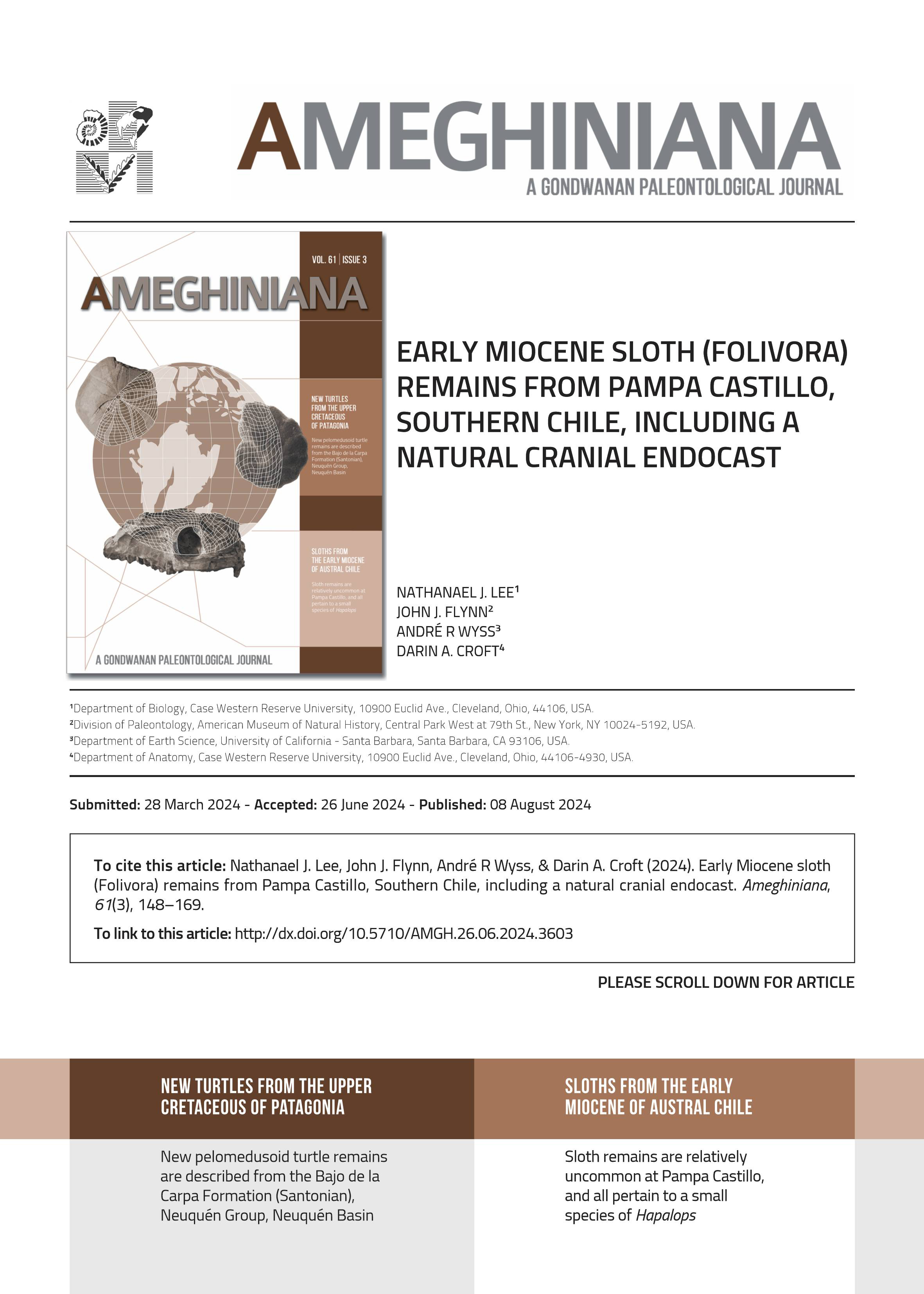EARLY MIOCENE SLOTH (FOLIVORA) REMAINS FROM PAMPA CASTILLO, SOUTHERN CHILE, INCLUDING A NATURAL CRANIAL ENDOCAST
DOI:
https://doi.org/10.5710/AMGH.26.06.2024.3603Keywords:
Astragalus, Encephalization Quotient (EQ), Folivora, Neogene, Pilosa, Santacrucian, XenarthraAbstract
The Pampa Castillo site in southern Chile has yielded a wide variety of Early Miocene (Burdigalian; Santacrucian SALMA; ~18-million-
year-old) mammal remains including metatherians, rodents, xenarthrans, and South American native ungulates. Here, we document the
folivoran (sloth) remains from the Pampa Castillo Fauna: a slightly distorted natural cranial endocast lacking the olfactory bulbs and four other specimens that together include a partial molariform tooth, a nearly complete astragalus, and various partial postcranial bones. All Pampa Castillo sloth specimens are similar in size and morphology, and we refer them to a single species of the megatherioid genus Hapalops primarily based on the astragalus and cranial endocast. The Pampa Castillo Hapalops species was relatively small, comparable to Santa Cruz Formation species such as H. angustipalatus, H. elongatus, and H. ruetimeyeri. We estimate its encephalization quotient at 0.40, close to values for H. indifferens and Eucholoeops ingens (0.48–0.58), smaller than values for extant sloths (0.68–0.90), and larger than values for Pleistocene sloths (0.16–0.31). The scarcity of sloth specimens at Pampa Castillo (< 1% of identified specimens) characterizes several other contemporaneous sites in southern South America (e.g., the Pinturas Formation and Upper Faunal Zone of Gran Barranca in Argentina and Sierra Baguales in Chile) and contrasts sharply with their abundance in the Santa Cruz Formation, likely reflecting some combination of climatic and/or vegetational differences, perhaps related to temporal and/or biogeographic variation. To our knowledge, the specimen from Pampa Castillo is the first described natural endocast from an extinct mammal from Chile.

Additional Files
Published
Issue
Section
License
Authors publishing in Ameghiniana have the option of making their article freely available online. Authors opting for the Open Access must pay a fee of $300 (US dollars) to cover article-processing costs and to ensure the article is made open access. Please contact the Production Team after the acceptance of your manuscript if you are interested in making your article Open Access. This option implies by default a license Creative Commons Attribution Non-Commercial-NoDerivs License (CC BY NC ND). If your funding institution requires a different licensing option please communicate this to the Production Team after the acceptance of your manusctipt.










